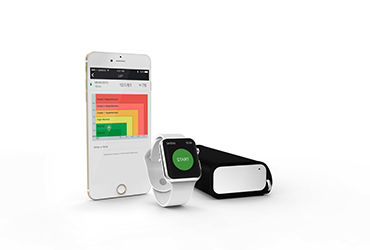White coat hypertension, also known as white coat syndrome, is a condition where a patient’s blood pressure is higher when taken in a medical setting than it is in other settings, such as at home. The term received its name from the white coats that medical professionals wear. It is important to know if you suffer from white coat hypertension as higher than normal blood pressure readings during a doctor’s visit might lead to misdiagnosis and overmedication.
What causes white coat hypertension?
White coat hypertension is a condition affecting patients who experience stress or anxiety at a medical setting such as doctor’s office or hospital. This results in a higher than normal blood pressure reading during their visit. White coat hypertension usually occurs with those who feel nervous for a nurse or doctor to measure their blood pressure. Those who are suspected to suffer from white coat syndrome are usually advised to measure their blood pressure at home and bring their home collected data to their doctor’s appointment for comparison and an accurate diagnosis.
Want to measure your blood pressure from home? Make sure to check our article ”Quick guide to monitoring your blood pressure at home.”
Can anxiety make blood pressure go up?
While occasional anxiety does not cause long-term high blood pressure, it can cause temporary spikes in blood pressure during those anxiety episodes. If those temporary spikes in blood pressure occur every day or frequently, they can damage blood vessels, the heart, and kidneys in the long run or cause high blood pressure. Talk to a healthcare provider about medication if your anxiety interferes with your daily activities.
If you want to learn more about hypertension, check our guide ”What does hypertension mean?”
What is masked hypertension?
Masked hypertension is the opposite of white coat hypertension. Patients with masked hypertension have normal blood pressure readings at the doctor’s office but have high blood pressure readings in other settings, such as in their home. Both white coat syndrome and masked hypertension are concerning conditions as both might lead to a wrong diagnosis and medication errors and both paint a strong case for the need of frequent BP monitoring outside the doctor’s office or hospital.
Is white coat hypertension dangerous?
While white coat hypertension may not cause immediate danger, some doctors believe that white coat hypertension might indicate a risk of developing high blood pressure as a long-term condition. It is also dangerous in a way that this temporarily increase in your blood pressure is likely to be misdiagnosed as ongoing hypertension, leading to unnecessary and unwanted overmedication. This is why frequent blood pressure monitoring at home is important as it can easily alert your medical health care provider about the possible presence of white coat syndrome.
How to treat white coat hypertension?
Although there is no known cure for white coat hypertension, frequent measuring of blood pressure levels at home or place of work and comparing those results with the doctor’s results can easily alert the medical professional of the potential presence of white coat syndrome. Such home BP monitoring should be always done with a medically validated device such QardioArm which makes it easy and convenient to take an accurate measurement anytime, anywhere and store the BP history in the app, ready for the next in-office doctor visit or email it beforehand if necessary.
The companion Qardio App allows you to set reminders to take your blood pressure regularly, and stores your readings in easy to read charts and graphs. Learn more about smart blood pressure monitoring with QardioArm.
Post contributed by Natalie Cassidy.
Sources:
Mayo Clinic 1
Mayo Clinic 2
Cedars-Sinai




